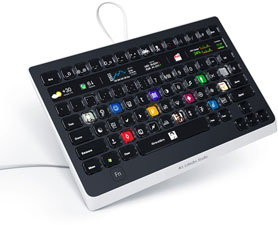Cost:
I spent about $60-$70 on electronic components for this project (excluding replacing a part that I ruined), and around $25-$30 for the boxes for the enclosure. If you build your own enclosure, you can probably save a lot of money. If you build this exactly like I did, you'll probably expect to spend around $100 give or take.
Electronics (Prices as of 5/16/13):
-3.5" TFT LCD screen....... $20.00
(http://www.amazon.com/3-5-Inch-TFT-Monitor-Automobile/dp/B0045IIZKU/ref=wl_it_dp_o_nS_nC?ie=UTF8&colid=1O1ZIWOSSBYGI&coliid=I3T7G8S5HAVZ7F)
Takes 12V, has two video inputs- yellow and white. The white input will override the yellow making the white input suitable for other external axillary usage for other AV equipment.
-Low lux video camera module...... $31.40
(http://www.amazon.com/SecurityIng-Surveillance-Security-Degrees-Support/dp/B005FE88VE/ref=wl_it_dp_o_nS_nC?ie=UTF8&colid=1O1ZIWOSSBYGI&coliid=I1M69IMZSUVC2I)
Other cameras will work so long as they can connect to the RCA video input on the screen. This camera is .008 lux rated. The lower the lux rating, the better it will see in the dark and the easier it will be able to detect IR light. I wouldn't go any higher than .008 for this, as the camera won't be sensitive enough to pick up the IR light effectively to create an image.
-30 LED Infrared illuminator..... $13.95
(http://www.amazon.com/gp/product/B001P2E4U4/ref=oh_details_o02_s00_i02?ie=UTF8&psc=1)
IR illumination is usually available in 840nm and 940nm wavelengths and the intensity is measured in watts, not lumens. 840nm IR light will also produce a visible red glow when viewed with the naked eye, however 940nm IR is completely invisible and undetectable. I chose a near infrared illuminator because it was easier to find, and it was more affordable than other IR illuminators.
I also picked up a Cree Ultrafire WF-501b Infrared Torch (850nm, so there is a red glow)..... $19.96
http://(http://www.amazon.com/gp/product/B008RL0KS6/ref=oh_details_o01_s00_i00?ie=UTF8&psc=1)
I ended up getting one of these for my rifle to use in addition to the infrared illuminator for longer distance viewing. Remember, more IR = more viewing distance.
-12V Battery
I was able to get an 8 AA battery holder that adds up to 12V for a few bucks at Radioshack. So long as you use 12V DC, you'll be fine.
-5V voltage regulator.....$1.99 from Radioshack
This is very important because the camera will only accept 5V DC power. Any more voltage than that will fry it and cost you another $30 camera. Trust me, it's not a good feeling to realize that you accidentally ruined your camera and have to buy another one. That's why this instructable is here for you, so you can learn from my mistakes and save money...and probably some profanity as well. :)
-Male to male RCA video adapter:
You'll need this because both the screen and the camera have female plugs for video and need to be connected. You can find one of these at Radioshack for around $5.
-Switches: You'll need a switch for turning on the camera and screen and for turning on the infrared illuminator. Switches are cheap and usually only a buck or two a pop.
Tools/Hardware:
-Multimeter
-Screwdriver
-Soldering iron
-Solder
-Wire strippers/cutters
-Wire
-Heat shrink tubing
-Lighter or heat gun
-Electrical tape
-JB weld
-Hot glue/Hot glue gun
-Drill and bits or access to a drill press
-Dremel tool and cutting attachment
-Black spray paint
Enclosure: This step is completely up to you. I used several ABS project boxes in various sizes from my local Radioshack electronics store and mounted them together to create my enclosure. The sizes I used were 5x2.5x2", 6x3x2", and 8x4x2". You could probably use PVC pipe, wood, plastic containers, etc and it would work just fine.
Completely optional, I also used some cheap 3M full-seal chemical protection safety goggles (lab goggles) to make the faceplate of the viewer and to help prevent light from the LCD screen from leaking and giving my position away (as if the glowing red IR LED's weren't enough). Plus....it does improve the look of the finished unit a bit. :)

No comments:
Post a Comment